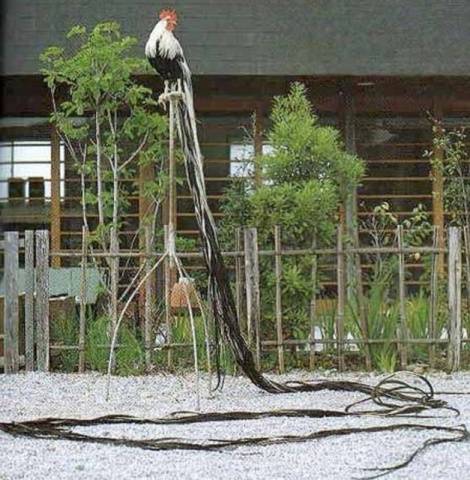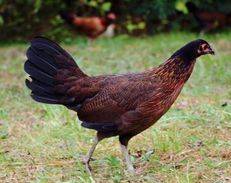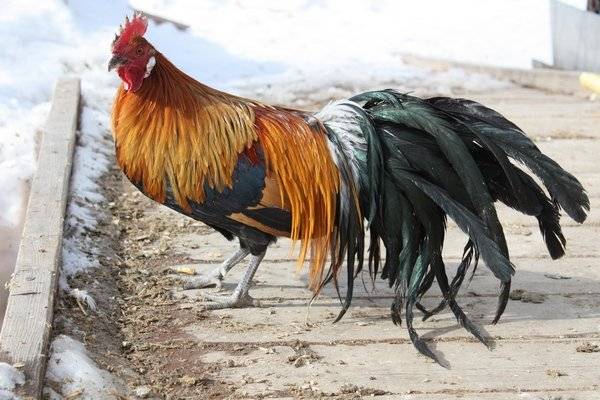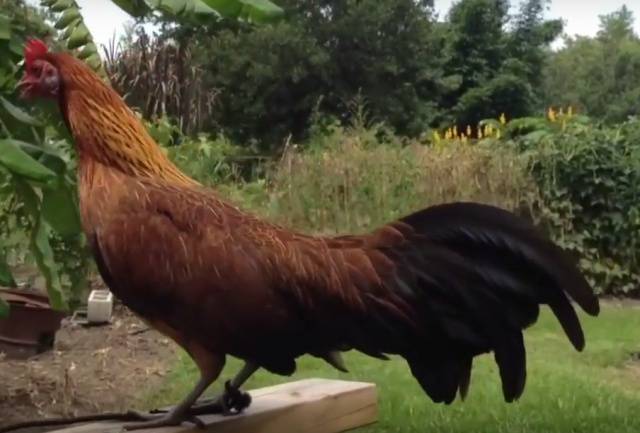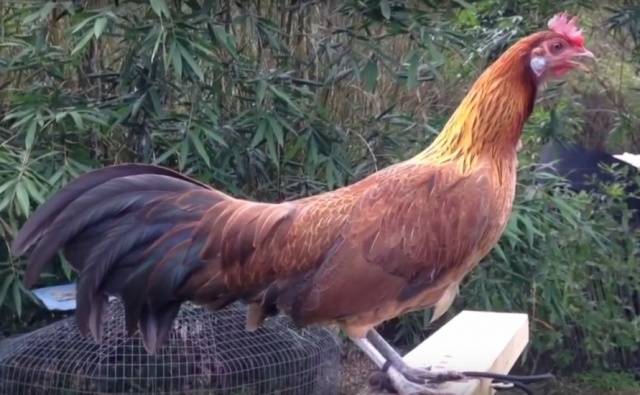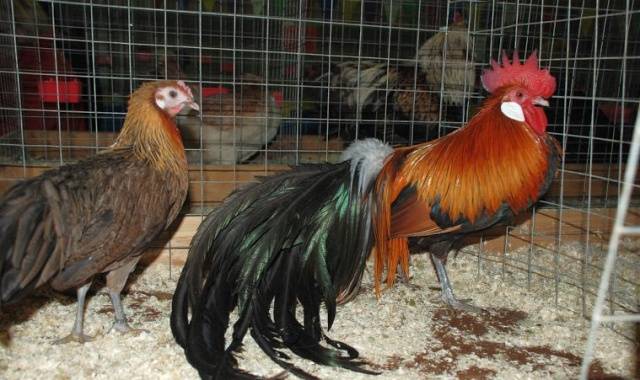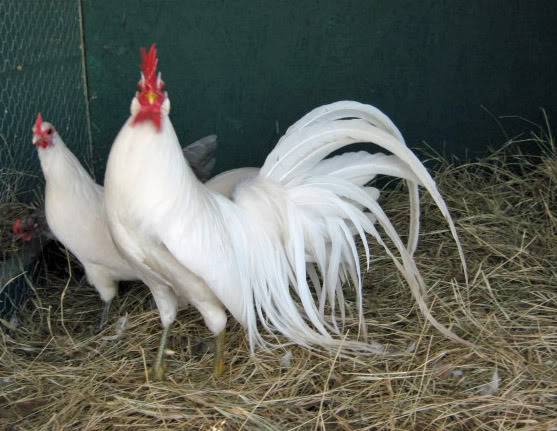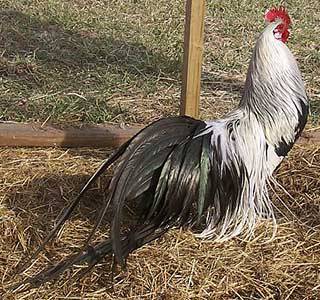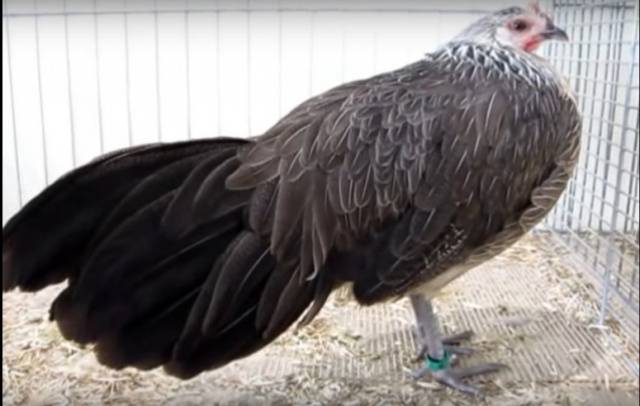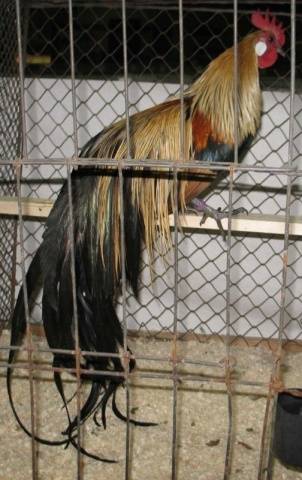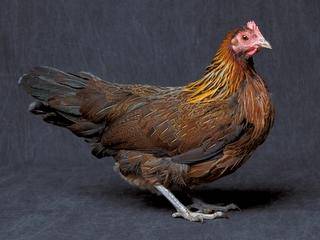Content
Among the many decorative breeds of chickens, there is one completely unique breed, one of the lines of which is categorically contraindicated to fly off the roost and walk on the ground, looking for tasty worms. These are the phoenix chickens - originally "invented" in China. In the Celestial Empire, the long-tailed breed of chickens, then called Fen-Huan, originated in the 1st millennium AD.
In this country, which is also the homeland of Feng Shui, according to this system of arranging household items, a Phoenix chicken should live in the southern part of the yard to attract good luck.
She lives. Only judging by the landscape, it is not enough luck.
In fairness, the tails of the ancient Fen-Huan were shorter.
Over time, the phoenixes came to the Japanese islands, where they were renamed Yokohama-toshi and Onagadori, taking a high position at the imperial court. After that, the arms race began, in the sense of the struggle for the superior length of the cock's tail.
By now, the Japanese phoenix line already wears 10-meter tails. The Japanese sarcastically promise to lengthen the rooster's tail up to 16 m. Why they need it is not clear, since already now the rooster is deprived of the ability to move because of the tail. To walk with its own paws, the Japanese phoenix rooster needs a special person to support its tail. If it is not possible to hire a person, you can wind papillotes on the tail. The Japanese keep roosters in narrow and tall cages. The width of the cage is no more than 20 cm, the depth is 80 cm. Food and water are raised to the chickens directly to the perch.
Feathers in chickens, like in any other bird, change twice a year, and tails would not have had time to grow to such a length if it were not for the Japanese geneticist who was engaged in breeding, who managed to find and "disable" the gene responsible for the seasonal change of feathers in phoenixes.
As a result, the older the rooster, the longer its tail. The oldest rooster at the age of 17 has a tail 13 m long.
Thus, the fengshui symbol of good luck is a bird suffering from hypodynamia and improper metabolism, enclosed in a single cage. Somehow luck is usually presented differently.
The video clearly shows how "happy" the bird itself is with such a tail, even if it has the opportunity to walk
Fortunately, or unfortunately, these long-tailed chickens are almost impossible to get. In Japan, it is forbidden to kill and sell them, the transfer of the phoenix chicken to other hands is possible only as a result of exchange.
Practical Germans did not chase the tail size of the phoenix, leaving a maximum length of up to 3 m. Basically, it is the German line that is widespread in the world. Although the tails of roosters are shorter, there are enough problems here. With a tail up to one and a half to two meters, the rooster is still able to cope on its own; when a longer tail grows, the owner will have to walk his pet in his arms.
Phoenix chicken breed standard
The standard describes the German breed line of Japanese chickens.
General appearance: a slender, graceful hen with a long tail, which is a distinctive feature of the breed. The rooster weighs 2-2.5 kg, the chicken 1.5-2 kg.
Breed characteristics of the rooster
The slender, proud-looking phoenix rooster makes an impression. An almost straight body with a wide and long back, narrower near the waist, gives it a proud look.The tail set low, fluffy and flat on the sides does not make the silhouette of the cock heavier, although it has an extreme length. Even if the tail of young roosters has not yet reached its full size, however, even in one-year-olds it should be at least 90 cm.The adult bird flaunts tail feathers up to 3 m.
The small phoenix rooster head with its simple, standing and low comb can be used as a reference for stylized rooster head designs. The combination of dark orange eyes with a gray-blue beak is very interesting. The beak can also be pale yellow, but this combination is no longer interesting. The beak is medium in size.
Further, the color of the cock's head continues with small white lobes and medium-sized red earrings.
The cock's neck of medium length is covered with luxurious, very long and narrow feathers, even extending over the back. On the lower back, feathers do not stop growing throughout the life of the rooster, and old phoenixes flaunt a feather that falls to the ground.
The phoenix rooster keeps its wings tightly pressed to the body, preferring to move on legs with medium-sized shins covered with a dense feather layer.
The thin bones of the limbs usually indicate the lightness of the skeleton. There can be no powerful spurs on a thin metatarsus, so phoenixes sport graceful but long spurs.
The belly of the phoenix rooster is hidden by the long feathers of the loin and is not visible from the side. It should be noted that the phoenix has tough and narrow feathers.
Breed characteristics of chickens
Phoenix chickens are smaller and sleeker, with a lower body. The head is decorated only with a small erect comb and small earrings. The tail, set horizontally, flat on the sides, is shorter than the tail of a cock, but also differs in an unusual length for chickens. The tail feathers are saber-shaped and very long for any other breed of chicken. The tail is very fluffy with long and rounded coverts at the ends, capable of covering the tail feathers. For chickens, spurs on the legs are not a disadvantage.
Exterior defects for phoenix chickens
Common for other chicken breeds, for the phoenix, red lobes are a defect. A short nib is also unacceptable. This is especially true of the mane, loin and tail of the phoenix. Wide braids in the tail of a phoenix rooster are disqualifying. Phoenix hocks can only be dark, phoenix hens with yellow or white metatarsals are discarded from hatching.
Colors
The Phoenix breed standard provides for five color options: wild, orange-maned, white, silver-maned and golden-maned. The phoenixes in the photo give an idea of what the different colors of these chickens look like.
Wild color
Cock. The overall impression of the color is brown. The color of the earth in the forest. The black-brown color of the head turns to red-brown with black veins along the feather shaft color of the neck. The back and wings are similar in color to black soil. The loin is the same color as the neck. Flight feathers: first order - black; the second order is brown. The only adornment of the "wild" rooster "is a tail shining with an emerald sheen and mirrors on the wings. The lower part of the body is black, the shins are dark gray.
Chicken. Camouflage, dismembering-speckled coloring. The black color of the head on the neck gradually turns into brown through the addition of a narrow brown border to the feathers. The plumage of the upper part of the body is speckled. The predominant color is brown with black specks, shimmering green. The feathers are brown, on the upper part of the body without a black border, but with a light shaft. Chest brown with small black dots. The belly and legs are gray-black. The tail is black.
The color is less common than others. Perhaps because the word "wild" scares away.
"Wild" and Silvermane
Orangemane
Cock. If not for the tail, it would have been an ordinary rustic rooster with orange plumage on the neck, loin and head.Wings and back are dark brown-colored. The flight feather of the first order is black, the second one is pale yellow outside. The black mirrors and tail shine with an emerald sheen. The lower part of the body and tibiae are black.
Chicken. The head is brown. The dark color of the plumage of the head on the neck gradually turns into yellow-orange with black specks. The upper part of the body, including the wings, is warm brown with small black specks and light feather shafts. The chest is muted carrot color. The belly and legs are gray. The tail is black.
White
Pure white color without the slightest admixture of another color. In the phoenix breed, yellow feathers are not allowed.
White
Silvermane
Cock. When looking at the bird, it seems that from head to tail, the phoenix rooster is wrapped in a silvery-white mantle. Feathers on the head, neck and lower back shine with a shine of either silver or platinum. The back and wings are white. Arguing with silver, the second half of the rooster, covered with black plumage, shimmers with an emerald glow. The flight feather of the first order is black, the second is white outside.
A young, not molted hen.
Chicken. The chicken is much more modest. The feather on the head, white with a platinum sheen, descends to the neck, diluted with black strokes. The body is dark brown with a beige chest, which becomes somewhat brighter at an older age, turning into a muted orange. The tail is pure black, no shades. The belly and legs are gray.
Silvermane
Goldenmane
Cock. The color is almost the same. Like an orange mane, but the color of the feather on the head, neck and lower back is not orange, but yellow. Plus a metallic sheen is added.
Chicken. Like the rooster, the color is similar to that of the orange-mane variant, but the color scheme has a bias not in the red spectrum, but in yellow.
Productive characteristics of the breed
Egg production of 100 light yellow eggs per year weighing 45 g. Phoenix meat has good taste characteristics, if someone raises a hand to slaughter a chicken.
Dwarf phoenixes
On the basis of Japanese and Bentham chickens, all the same Germans bred the "dwarf phoenix" breed.
The description, appearance and colors of the dwarf phoenix are no different from its large counterparts. The difference is only in weight, productivity and in proportion to the shortened length of the tail.
The weight of the dwarf cockerel is 0.8 kg, the chicken is 0.7 kg. The tail length is up to 1.5 m against the 3-meter tail of a large phoenix. Egg production is about 60 yellowish eggs with a weight of 25 g.
Feeding
Feeding phoenixes is no different than feeding any other chicken breed. Phoenixes gladly consume soft food, which is best given in the morning, and grain at night. Phoenix chickens are usually fed twice a day. If phoenix chickens are fattened for meat, then you can feed them more often.
Breeding
There is an opinion that phoenix chickens are useless mothers, so eggs need to be selected and chickens hatched in an incubator. Perhaps this is so in reality. Maybe the fact is that almost all phoenixes were bred in an incubator, without communication with the hen. Oddly enough, but the best hens are those chickens that were themselves bred under the hen. Hatchery chickens often lack this instinct. With phoenixes, in this case, a vicious circle turns out: buying an incubator egg - an incubator - a chicken - a laying hen - an incubator.
You can open it by conducting an experiment and bringing out the phoenix under another hen. But usually now they prefer to use incubators.
Features of maintenance and walking
Because of the long tails, phoenixes need to make special perches at a height of 2-3 m. You don't have to worry about walking. Phoenixes are very frost-resistant and gladly walk in the snow, reluctantly entering the room. Nevertheless, to prevent chickens from freezing, the overnight stay must be insulated.
In general, with the exception of fiddling with a long tail, the phoenix is an unpretentious and hassle-free chicken that even beginners can start.

